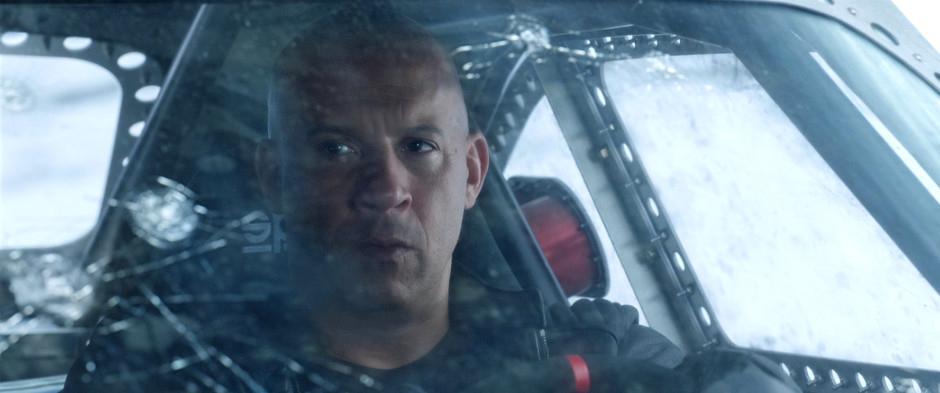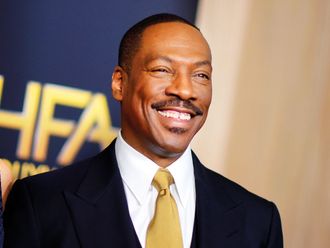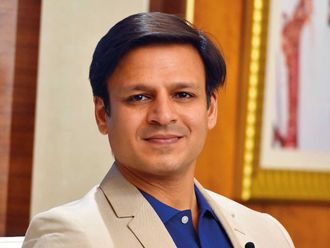
Improbable as it may seem, now that he is the anchor of three action franchises, Vin Diesel, 49, started out as an artsy downtown New York kid. He first hit the stage when he was 7, at the Theatre for the New City in Greenwich Village.
Years later, after he filled out physically, he worked for a decade as a bouncer at the Tunnel and other clubs. But beneath the brawny surface was a Dungeons & Dragons enthusiast who idolised Sidney Lumet and wanted to dedicate himself to the arts.
Frustrated with his inability to make it past the gatekeepers, Diesel directed and starred in a short film, Multi-Facial, which was shown at Cannes in 1995. His next effort as director and star, the full-length work Strays, made the 1997 Sundance Film Festival. If his apprenticeship sounds more Lena Dunham than Arnold Schwarzenegger, Diesel would say you’re exactly right.
Multi-Facial impressed Steven Spielberg, who cast him in Saving Private Ryan. Soon after that, Diesel’s career took off: He played the killer Riddick in Pitch Black, the street racer Dominic Toretto in The Fast and the Furious and the lethal superspy Xander Cage in XXX. All three have spawned sequels and video games.
The most recent Fast and the Furious film grossed more than $1.5 billion worldwide, and the eighth instalment, The Fate of the Furious, opens on April 13 in the UAE. The ninth and 10th editions are planned for 2019 and 2021.
Vin Diesel was born Mark Sinclair in Alameda County, California, in 1967. He says he does not know his biological father. His mother, Delora Sheeran Vincent, an astrologer, married Irving Vincent, a New York theatre manager, director and acting teacher, who became Diesel’s stepfather.
Diesel discussed his unlikely rise in a telephone interview from his home in Los Angeles, where he lives with his girlfriend, Paloma Jimenez, and their three children.
When you first became an actor, what kind did you think you would be?
I thought I was going to be a dramatic actor. I started acting when I was seven. I grew up in the city, in artist housing on the lower West Side. My father was a theatre director. When I first started acting, the whole idea of an action hero was relatively new. It didn’t hit me even as my years as a bouncer were changing the way I looked. I was hell-bent on working with Sidney Lumet.
Eventually you went west. What was your first impression of Hollywood?
Well, the first time I went to Hollywood, I couldn’t even get an agent. I remember leaving my bouncing job and saying, “See you, suckers.” They asked me, “What are you going to do?” I said: “I’ve been acting my whole life. I’m going to Hollywood to be a movie star.” I got to LA and I auditioned a bunch, but I couldn’t get an agent. I ended up telemarketing — selling tools over the phone.
Where did you go from there?
That was the beginning of the shoestring film budget movement. When El Mariachi came out — Robert Rodriguez made it for $7,000 — it was a gigantic breakthrough for me. I thought, I no longer have to go beg someone for a spot. I can go bouncing and save up $3,000 and invest in my own story. One Christmas I went home and my mother got me this book by Rick Schmidt: Feature Filmmaking at Used Car Prices. In New York, I felt there were more resources. There were non-profit organisations that would help you make a film. So I started putting together a feature, which later became Strays.
But I couldn’t get the money to make Strays then. This was 1995 and I did eventually complete it, and it was selected for competition at Sundance in ’97. So I went by a phrase very successful people say: “If you can’t do it all, do what you can.” I wrote and filmed a short film called Multi-Facial. It was, in essence, my story about how hard it was to get roles as a multiracial actor.
To write my first script, I went to an early electronics store called the Wiz that was on 14th Street. They had a policy where you could return anything within 30 days, no questions asked. So I went to the Wiz and bought this $600 word processor on my student credit card. I stayed up all night, every night. And at the end of the 30 days I returned it.
Then I went out and rented a 16-millimeter camera on a Friday, because I didn’t have to return it until Monday, so I was able to shoot for three days. Cut to my mom watching me roll an old 16-millimeter Steenbeck into my little room. I was cutting and splicing Multi-Facial old-school style. This was before computers, really. It was a beautiful, beautiful, beautiful time. A lot of people say they want to be successful, to be at the top. That’s not where the fun is. The fun is the journey.
When did you get your break? Or is there not really such a thing as one big break?
That’s true, there wasn’t just one break. One of my big breaks is Multi-Facial.
In January of ’95, I screened it at Anthology Film Archives. It was the only place that had a 16-millimeter projector. No one had ever seen my film. Everyone just thought I was the bouncer who did theatre on and off. Then I showed the movie and 20 minutes later, when the movie ended, the whole audience never looked at me the same. Friends from my neighbourhood, friends who bounced with me, even my own parents, they looked at me so differently. I can’t even describe it.
Another break was after Strays played at Sundance. About a month after, I got a call from Steven Spielberg and he wrote a brand-new role for me in Saving Private Ryan.
Do you think you’ve been underestimated because of your looks?
Sidney Lumet used to say the same thing. While we were doing Find Me Guilty, he told me: “You will suffer what beautiful women have suffered in this industry for 100 years. You will suffer for your action-hero physique.”
You’re the first actor to have 100 million Facebook followers. Do you think social media enables others to see you in a more complex way?
Oh, definitely. Social media has allowed me to post a video of me singing to the mother of my children on Valentine’s Day. How would you ever be able to see that before social media? Social media has documented some of the most challenging moments of life — when I lost my brother Pablo (actor and Fast and the Furious co-star Paul Walker, who died in a crash in 2013). There’s wisdom that comes from an honest page.
My Facebook page is also where my relationship with Mark Zuckerberg started.
Do you have a dialogue with Zuckerberg?
Of course! I love him. He’s such a great guy and he’s a fan of my work. He probably encouraged me more than anyone else to return to Xander Cage. We were hanging out up at Facebook about two years ago, and I was excited about Fast 7. He said, “You know what movie I’d most like to see is the return of Xander Cage.” It’s at a point where if Mark and I are together and if I quote a line from a character I played and I do it slightly wrong, he’ll correct me. It’s embarrassing!
What place do action heroes occupy in Hollywood?
Does the action hero really exist? That would be my question if we were killing it at a bar and getting really intense into the discussion. I feel like there are movies that have action in it and they might have comedy and romance moments as well. There isn’t a school you go to to become an action hero. If you had to go back to 1939, and you watch Gone With the Wind, there was action there but you wouldn’t call Clark Gable an action hero. Or if it’s Rebel Without a Cause, you’re not going to call James Dean an action hero.
Maybe the term was invented by Hollywood, to focus on the physique of Arnold or something, as opposed to seeing whether he could credibly pull off a film in what was his second language. Does the term truly exist or is it journalist shorthand?
For someone with questionable acting skills?
Yes! The best part of “Fast and Furious” is not the big explosions. It’s the heart. When you think about the brotherhood of Dom and Brian, that’s what carries through so many films. And no characters in history have carried on a love affair that is so captivating and kept your attention for as long as Dom and Letty.
It’s to the point where a kiss from another woman — Charlize Theron in Fast 8 — is the biggest action sequence in the trailer. Fast 8 has the highest viewed trailer in history, meaning it’s officially the most anticipated in film history. But what is the core of the trailer? It’s something as familiar and simple as a kiss.
Don’t miss it
The Fate of the Furious releases in the UAE on April 13.










